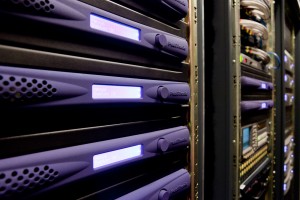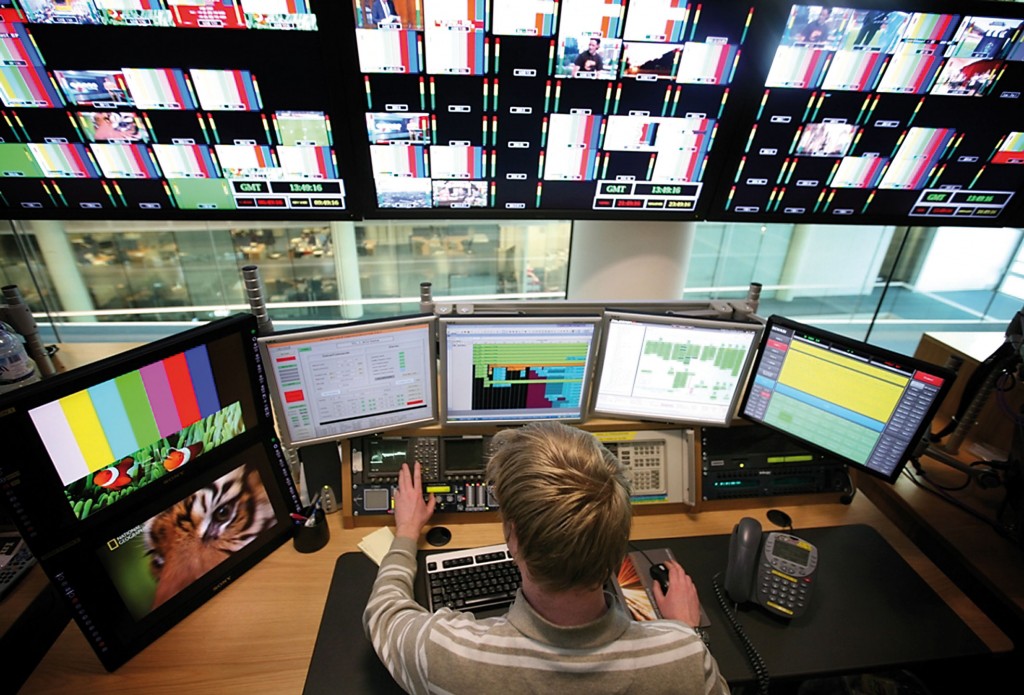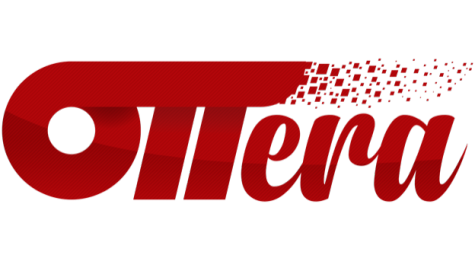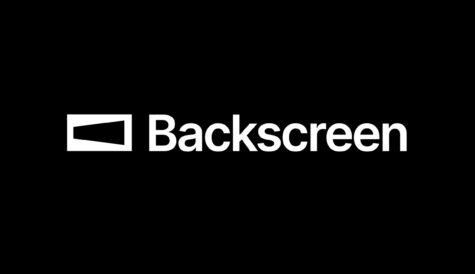Traffic congestion – channel playout in the multiscreen era
The proliferation of devices capable of playing back professional video content is making life more complex for channel playout providers, writes Anna Tobin.
Playout traffic controls across the world are experiencing congestion and it is likely to get worse before it gets better. Platform operators are under pressure to deliver high-resolution video and high quality audio to 3D, HD, connected TVs and standard TVs, as well as mobile devices such as smartphones, iPads, and tablets.
The systems are currently coping, but all it takes is one mistake for content providers to start questioning the ability of their infrastructure to cope. A consolidation around standards is needed to lighten the load on ingest and playout. It’s not easy getting everyone around the table to agree, however.
“To deliver correctly formatted content to smartphones, tablets, PCs and set-top boxes you are typically taking the in-bound video streams and transcoding each stream four, eight, or 12 times into multiple bitrates and resolutions needed to deliver each programme,” explains Ramin Farassat, vice president, product marketing and business development, RGB Networks. “Combine that with different adaptive streaming delivery formats such as Apple HLS, Microsoft Smooth Streaming and Adobe HTTP Dynamic Streaming and you can have a multi-dimensional multi-screen delivery problem.”
‘Can’ is the key word here: it doesn’t have to be a problem. The technology is available to make all this happen, but service providers are still trying to feel their way around it. Indrek Lepp, director, multimedia services at Tallinn-based transmission services provider Levira, says: “Multiscreen distribution means handling multi-format content and that needs integrated transcoding solutions. There are a number of good transcoding systems available and basically all this work can be automated, so that multi-format delivery is, from the playout perspective, just a matter of its technical setup. After the material is ingested it is automatically transcoded to additional formats for distribution to other platforms. Depending on systems used in playout, workflow can be exactly the same – the server can also output an IP-stream – or a completely different setup can be used that needs separate transcoding systems and IP-multiviewer and monitoring systems.”
There is a lot of kit in the shop window to choose from and when selecting which pieces to go for, service providers are also trying to second-guess where the market is going to go to try and future-proof their business model.
“More than ever we see our customers thinking about how they will reach their audiences, both now and in the future,” says Peter Elvidge, deputy sales director at media services provider Globecast. “This means they are thinking about how they can manage their content effectively to support their traditional linear channels and maybe some web-based delivery today, but to also maintain ultimate flexibility for the future. It’s a trend that must accelerate for our industry to remain relevant and competitive.” There are lessons to be drawn from the music industry, he says: “If content owners don’t make their content easily accessible to their customers, in the right place, at the right time and now on the right screen, their customers will find alternative ways of getting it. This means that service providers must control costs by ensuring that digital supply chains to all of the target screens are highly automated, highly efficient and maintain the quality of experience that is synonymous with the broadcast industry.”
The learning curve for all involved is steep. There is a vast amount of testing taking place at the quality control stage to make sure that the audio and video is playing simultaneously at its best on set-top-boxes, games platforms, mobile phones, tablets, PCs, connected TVs, etc. In addition, there is metadata linked to this content, which also needs to be delivered and this metadata is different for every platform. “You can’t underestimate the amount of time all this takes,” says Ian Wimsett, senior technologist at media services provider Red Bee Media. “There are very few common standards. You might get some similarity between bits of video, but the way it all needs to be delivered to each platform and the data you need to send with it is by no means the same.”
Although processing might vary between platforms, the end-user wants to experience the content in the same way, whichever platform they are accessing it from. Up until now, says Thierry Fautier, technology provider Harmonic’s senior director, convergence solutions, content providers have largely “concentrated on speed to market to get on to these emerging platforms, to discover if their business model will work”. Consumers’ needs have been overlooked as a result of this race. From the end-users’ perspective, there is no unified approach, with a need to use different players for rival services. “I believe that there will be a unified approach at some point,” says Fautier. “With catch-up, in particular, there is a need, from an end-user perspective, to have some kind of portal available that ensures that they don’t need to have to input their credit card details before using each service.”
Whilst simplification is needed at the end point, it is also needed at the start too. Whether playout is outsourced, or managed in-house, content management systems must be easy for the content providers to access and deliver to. Achieving this apparent transparency is the key to third-party playout and automation facilities winning and retaining business. And, if an in-house playout system can manage this and do so economically then content providers will invest in this facility, instead of shutting it down.
Outsourcing playout
Integrating content to be delivered to multiple screens in multiple formats with multiple metadata requirements is hugely complicated and expensive. There are, however, a variety of add-on solutions that allow broadcasters to future-proof their technology and continue relying on in-house playout services.
“Many broadcasters feel they are able to add on adaptive bitrate delivery workflow solutions to their existing workflows with confidence. These additive technologies are complimentary to existing infrastructure and often require little extra personnel or attention,” says Matt Smith, vice-president, internet television, Envivio. “It appears that this additive trend will ramp up over the next 12 to 18 months as TV Everywhere and similar offerings appear for packaged subscribers of telco/cable/DTH services in the marketplace.”
 Although some of the larger broadcasters are continuing to do everything in-house, the huge investment needed to keep up with the demands on playout facilities is what is leading many content providers to look to third parties to provide this. “Bigger players may work out that there is enough critical mass to make it economic for them set up their own operation to allow them to transcode and deliver internally, but smaller players will look to us to offer an extension of the playout service,” says Jon Try, vice-president of technology at playout centre Chello DMC.
Although some of the larger broadcasters are continuing to do everything in-house, the huge investment needed to keep up with the demands on playout facilities is what is leading many content providers to look to third parties to provide this. “Bigger players may work out that there is enough critical mass to make it economic for them set up their own operation to allow them to transcode and deliver internally, but smaller players will look to us to offer an extension of the playout service,” says Jon Try, vice-president of technology at playout centre Chello DMC.
Broadcasting is increasingly splitting into two camps, says Harold Vermeulen, managing director at playout technology specialist PubliTronic. “We are seeing more and more broadcasters realising that the technicalities of media are separate to creating that media. And, with multi-screen delivery more conventional broadcast engineering is less valuable, it can’t be applied to a more IT-based and multi-screen approach,” he says. “So, many broadcasters, instead of investing in the new technology, are opting to use the more specialised knowledge and benefit from the economies of scale that outsourcing can bring.”
Whether playout is outsourced or retained in-house, automation and, subsequently, reducing labour-intensive tasks, is the secret to keeping costs down. “You need to avoid the duplicating of effort on the workflow side,” says Simon Eldridge, senior manager, product line management applications at Harmonic. “Our products ensure that a single file is produced that can be used to create broadcast output and multiplatform output too.”
Now that the majority of content is delivered digitally, this has drastically reduced the strain on the ingest part of playout. Try at Chello DMC says: “We are now taking most of the content we receive digitally. Tape delivery has really gone down. We now run over 65 channels from here and well over 80% of content is delivered digitally, so ingest is rapidly turning into more of a quality check process. We have set up our systems so that content that comes in goes through quality check and then goes into the system to be ready for playout on multiple platforms.”
Reducing the workflow through integration also gives economies of scale, points out Vermeulen at PubliTronic: “We are very much an integrated playout provider. We rely very heavily on the media management side, using it very specifically to prepare content for multiple delivery platforms, which makes it a better business model for our customers.”
The increasing reliance on software, rather than hardware-based services, also makes it easier for automated systems to work efficiently. It is much harder to get different hardware platforms to work together than it is to develop programmes that integrate software, plus it is more economic and scaleable.
[icitspot id=”14773″ template=”box-story”]
Catch-up TV
The expanding variety of catch-up services presents a further challenge to playout operators. Managed, server-based catch-up, as opposed to the individual catch-up experience that DVRs offer viewers, is a growth area, says Lepp at AS Levira. “Managed catch-up has created advantages for connected operators, like IPTV, who usually run a central server based catch-up service,” he says. “For all other platforms, it is an issue of either developing their network to make it connected or replacing the consumer device to record and play centrally managed catch-up content. As for the playout service operator, it is just a technical matter, to include some additional information to the signal that can be interpreted by the consumer devices and record the right content. Business-wise it is only reasonable and do-able for major channels or strong network operators, who want to differentiate their product and add value to and increase loyalty of their viewers. In most cases it is likely not to be a direct revenue related move.”
Catch-up TV is a great term with a very wide scope, says Elvidge at Globecast. “It can be anything from an internet player to a more complex custom application written within a walled garden of a platform operator,” he says. “What they all have in common is the need for a digital supply chain to make sure the right content gets to the audience along with the right metadata to guide the audience to viewing it.”
The digitization of the industry has simplified on-demand distribution somewhat, with most content providers now storing content on digital files. “As PubliTronic’s integrated playout facility works on an IT-based workflow, it makes it much easier to have catch up as an add-on to the standard linear playout,” says Vermeulen.
“We try and do everything in parallel,” says Wimsett at Red Bee. “So we use a single-file based master asset and use that to generate all the versions that are needed for distribution to all the different platforms.”
The consensus amongst providers seems to be that when it comes to catch-up services the issue is not whether the technology works. The technology exists to get catch-up content wherever it needs to be whether that be a connected TV, tablet or a mobile phone. Nor is it a question of integrating that technology. Even with the current mess and lack of consensus around standards, content can be moved about, but it’s complex. And it’s working through this complexity that causes the complications and the need for extra manpower.
“Despite the standardization efforts, there are still many proprietary solutions and a whole zoo of consumer devices on the market,” explains Lepp at Levira. “That usually means that theoretically it will work, but in practice you’ll need to have a lot of efforts to guarantee the flawless operation of your services in all major devices. We know that from this perspective it is easier for vertically integrated operators with their own choice of equipment upstream and downstream. In this case, however, it requires a vertical integration across the whole market and a large number of devices: TV-sets, set-top boxes, phones, laptops, pads, cars etc. There are not many operators of that scale around. But the hope stays alive, that may be one day we will have everything intuitive and seamless.”




